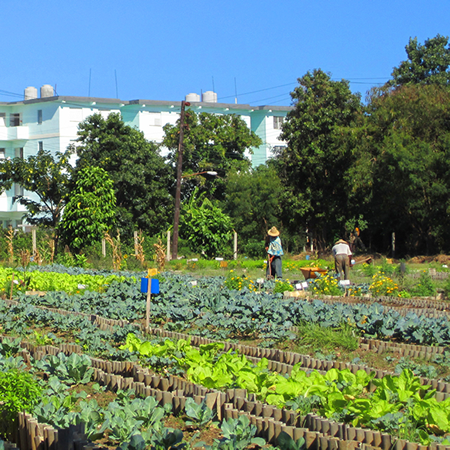Architecture and the Edible City
By Christopher Hume
Star Columnist
Aug 19, 2011
For the first time in a long time, the future doesn’t look better than the past.
Faced with the prospect of climate change, environmental degradation, economic upheaval and diminished resources, it’s not unexpected that architects such as Susan Fitzgerald have started to look at the world beyond the building.
The Halifax practitioner, just announced as the winner of the Canada Council $50,000 Prix de Rome, will spend the next two years figuring out how cities can be made more productive. That’s productive in an agricultural sense — how can cities take advantage of opportunities available to grow the food we consume, even raise the livestock we eat.
“This has become a big interest,” says the British-born architect. “My work has alluded to it, but not run with it.”
read more...

Susan Fitzgerald Architecture Wins The Canada Council For The Arts Professional Prix De Rome
![]()
Susan Fitzgerald Architecture explores
urban landscape as winner of the
Professional Prix de Rome in Architecture
Ottawa, August 10, 2011- As winner of the $50,000 Canada Council for the Arts Professional Prix de Rome in Architecture for 2011, Halifax firm Susan Fitzgerald Architecture will study the environmental, health and social benefits of integrating agriculture and innovative green spaces within towns and cities.
Susan Fitzgerald Architecture will use the prize funds to pursue their research project entitled Productive Urban Landscape. Availability and accessibility of food is a growing concern both internationally and locally. The research will explore the relationship between ecology, agriculture, architecture and landscape in urban centres. Travelling to Cuba, Peru, Brazil, Mexico, Panama and Chile, they will gatherfirst-hand knowledge and investigate this connection and how it can work more effectively for the benefit of the population in the future.
Administered by the Canada Council for the Arts, the Professional Prix de Rome in Architecture recognizes excellent achievement in Canadian architectural practice. It is awarded to a young architectural firm that has completed its first buildings and demonstrated exceptional artistic potential. The prize allows the winners to travel to other parts of the world to hone their skills....
read more...

Fuller Life
A Halifax live-work project achieved through a speculative design-build process helps contribute to a denser and more vibrant urban fabric.
2011-04-01
Project Fuller Terrace, Halifax, Nova Scotia
Architect Susan Fitzgerald Architecture
Text Ian Chodikoff
Photos James Steeves, unless otherwise noted
Completed in 2010, Fuller Terrace is one of the Fitzgeralds' latest speculative residential developments.
The project is located in Halifax's North End, an eclectic working-class neighbourhood characterized by turn-of-the-century houses and largely comprised of rental properties. The North End has become increasingly attractive for university students while artists, musicians and writers continue to live in the area.
A textbook example of infill housing, Fuller Terrace shares many similarities to other infill projects across Canada where designers have come to recognize how their respective markets maintain an interest in smaller and more affordable live-work buildings that may either be sited on narrow lots or facing laneway conditions...
read more...

Home Of The Future
Home Of The Future
Susan and Brainard FItzgerald’s modernist house stands out in Halifax’s north end, but that’s because it was built with the next 100 years in mind: to be a smaller, dual-purpose space for work and living.
By Carsten Knox
Architect Susan Fitzgerald conceived of this building as “two clearly defined wooden boxes---one black and one grey that intersect with each other.” She looked at the residences on the street and was inspired as much by them as by her own modernist sense.
“A lot of it’s about integrating with the landscape and the urban environment,” she says. “Very much trying to draw from what’s good about what’s around the place. This is just one example of a line of inquiry.”
Fitzgerald, a UK native interior designer and architect, and her partner, Annapolis Valley-born builder Brainard Fitzgerald, have been designing and renovating homes for 20 years. Other examples of their work can be seen on Bridgeview Drive off Purcell’s Cove Road and on Elm Street near Quinpool Road.
They all share a geometric similarity in the way they interpret the space, but the utility of the Fuller Terrace house, anticipating the way we will be living in the future, is as important as its bold aesthetics.
While it cuts a modernist scythe through the stately row-house sameness of the block, a startling expression of forward-thinking design, it imagines what Halifax will be like at a time changed by environmental...
read more...

Working In The Margins
Working in the Margins
2007-04-01
TEXT Christine Macy
Building in the Maritimes--through the career trajectory of Susan Fitzgerald, a partner in the 90-year-old Halifax firm of Fowler Bauld & Mitchell.<
It may be a result of Canada's five time zones, or its latitudinal reach from the 49th parallel to the 90th, but it seems sometimes that the question of "regionalism" marks every discussion of Canadian architecture, inside the country and out. If one were to accept at face value the perspective of the international press, all Canadian architecture is a regional inflection to the various currents of contemporary architecture--an inflection particularly redolent of vast landscapes, nice wood detailing, and a purity appropriate to long, cold winters.
In nationwide discussions of Canadian architecture, the Maritimes are similarly pigeonholed, making "maritime" architecture synonymous with "regional" architecture. Is this because the Maritimes appear, to the rest of the country, to exist out of historical time--rooted, perhaps in the rural novels of Ernst Buckler or, more recently, Annie Proulx? Or because this part of the country is populated with small towns and distinctive rural areas that present such a piquant contrast to the remainder of an essentially urbanized Canada? Or does this tendency to transform the "other" into the "regional" serve as a kind of wish-fulfillment--the feeling that somewhere a purer, truer, more authentic way of life goes on?
read more...
